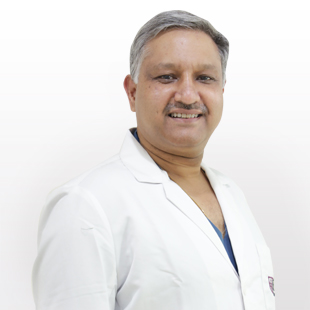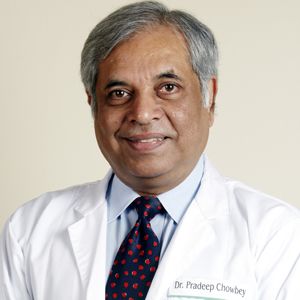About The Doctor
Dr. Sanjay Verma is one of the finest Laparoscopic, Gastro Intestinal, Bariatric & Metabolic Surgeon; he is presently operating as Additional Director of the department at Fortis Escorts Heart Institute & Research Cenntre, New Delhi.
Specialization
- Laparoscopic Surgery Gall Stone
- Laparoscopic Appendicectomy
- Laparoscopic Hernia Surgery
- Stapler Haemorrhoidectomy / MIPH (Minimally Invasive Procedure for PILES)
- VAAFT (Video Assisted Anal Fistula Treamtment) Surgery
Awards
- FMAS (Fellowship of Minimal Access Surgeons of India). Fellowship for practicing Minimal Access Surgery in India & supported by Medical Council of India and Association of Surgeons of India in FIAGES (Fellowship of Indian Association of Gastrointestinal Endosurgeons), Fellowship for practicing Laparoscopic Gastrointestinal Surgeries
- Part of Course and operative team– Surgeon to Surgeon Visitation Program: Bariatric & Metabolic Surgery on 2015, affiliated to Boston University School of Medicine at Fortis Hospital Vasant Kunj, New Delhi. 18th & 19thof July 2015.
- Part of Operative team at Department of Surgery, PGIMER & Dr Ram Manohar Lohia Hospital, New Delhi. To demonstrate and teach Bariatric & Metabolic procedures. June 2015.
Frequently Asked Questions About Bariatric and Laparoscopic Surgery
Is weight loss surgery for you?
According to international accepted criteria, the indications for obesity surgery are BMI > 40 kg/m2 or BMI>35 with pronounced co-morbidities. It is also requires several failed non-surgical attempts at weight reduction under the guidance of a physician over a period of one year and the absence of surgical contraindication or concomitant disease. Nevertheless, limits to the indication for surgery continue to be changing. For example, diabetes specialists suggest that a BMI of 32 kg/m2 in patients with type 2 diabetes as an indication for surgery.
Recent advanced in Bariatric & Metabolic surgery
Surgical weight loss is exclusively performed by laparoscopy or key hole surgery in which operations are performed through 4 – 5 small (usually 0.5 – 1.2 cm) incisions. Specialized equipment and instrumentations are necessary for this technique makes it a little more expensive than laparoscopy for other diseases. Latest additions in the field of laparoscopy include Single Incision Laparoscopic surgery, Robotic surgery & Endoluminal surgeries all of which are aimed at increasing the safety of the procedures as well as making it less invasive than conventional laparoscopic procedures.
What Are The Benefits Of Laparoscopic Surgery?
The benefits of laparoscopic procedure over open surgery are impressive. By decreasing injury to skin and muscles, the resultant pain and discomfort are reduced. Oral intake can be started by the same evening. Most of the patients can be discharged from the hospital the next day as compared to three to five days after open surgery. After laparoscopic cholecystectomy, recovery time (at home) is usually around five days as compared to three-six weeks for open surgery. Tiny punctures of laparoscopic surgery are cosmetically superior to long scar of conventional surgery
How Is Diseased Gallbladder Removed?
The traditional way to remove the diseased gallbladder was through a 15 to 20 cm incision in the abdomen, cutting skin; fat, and three layers of muscles underneath, which were then stitched back in layers (open surgery). Now, the same surgery can be performed through tiny skin punctures, without damaging underlying muscles. The technique is called Laparoscopic cholecystectomy.
Diabesity: Is surgery a cure?
Diabetes being a medical disease, it was traditionally treated by diet and exercise with mild oral medicines. The disease keeps on progressing in most people with on-going complications on many organs in the body. It is associated with high cholesterol levels, high blood pressure, fatty liver disease, obesity and polycystic ovary disease causing the Metabolic Syndrome and also kidney failures, heart attacks, eye problems including blindness, nerve diseases etc. Diabetic surgery is surgery for cure of diabetes associated with or without obesity. These type of surgeries are performed for people with uncontrolled levels of blood parameters even after the maximum dose of drugs has been given and when the disease has become life threatening.
What are the benefits of taking treatment through MMT instead of directly from the doctor?
We provide services from top doctors across top hospitals to ensure that you get the best treatment.













